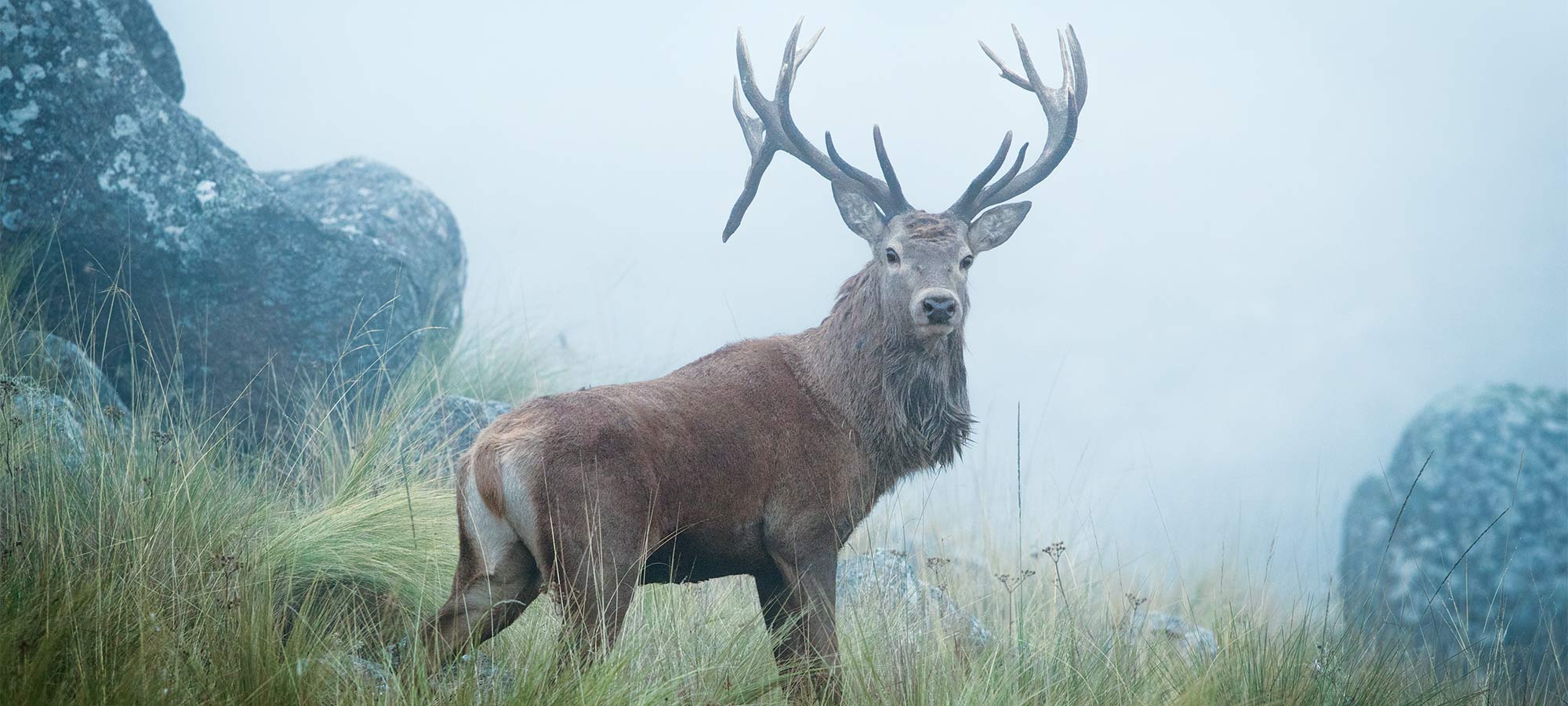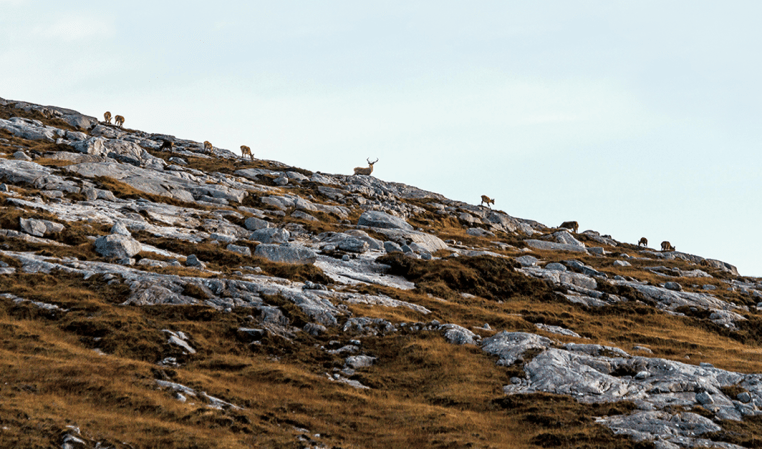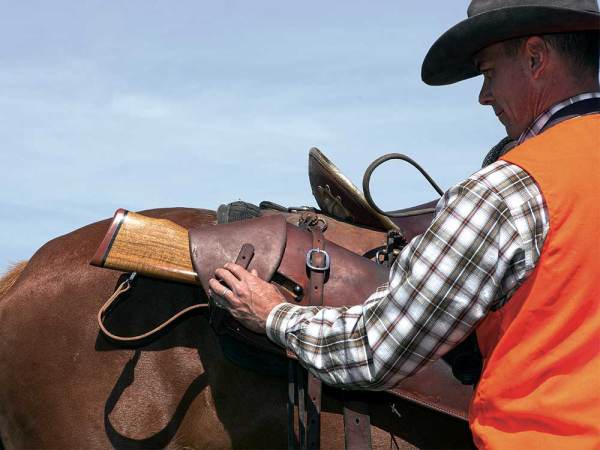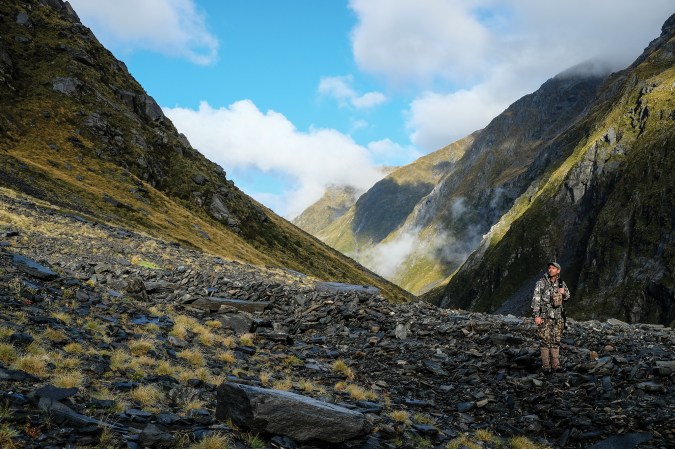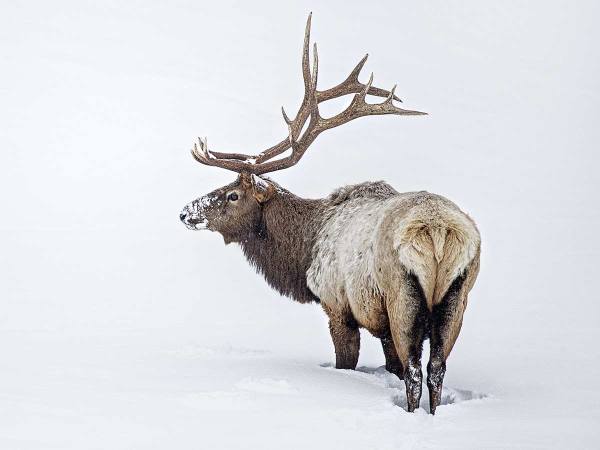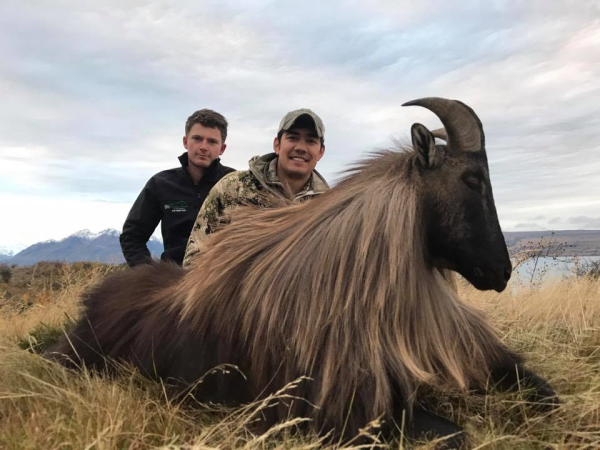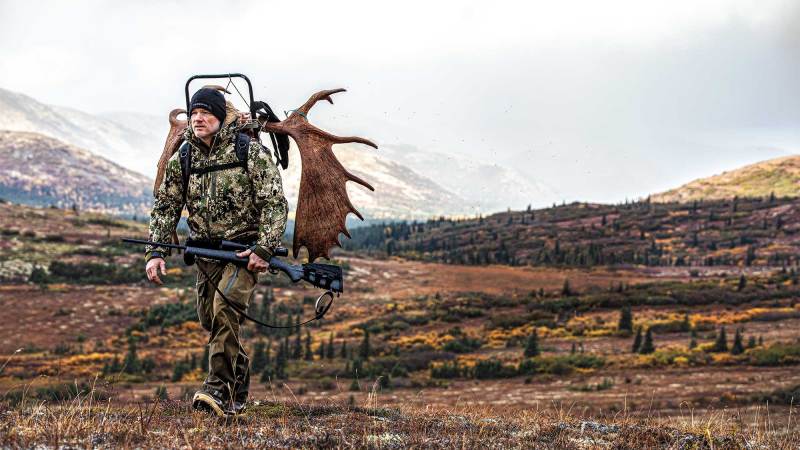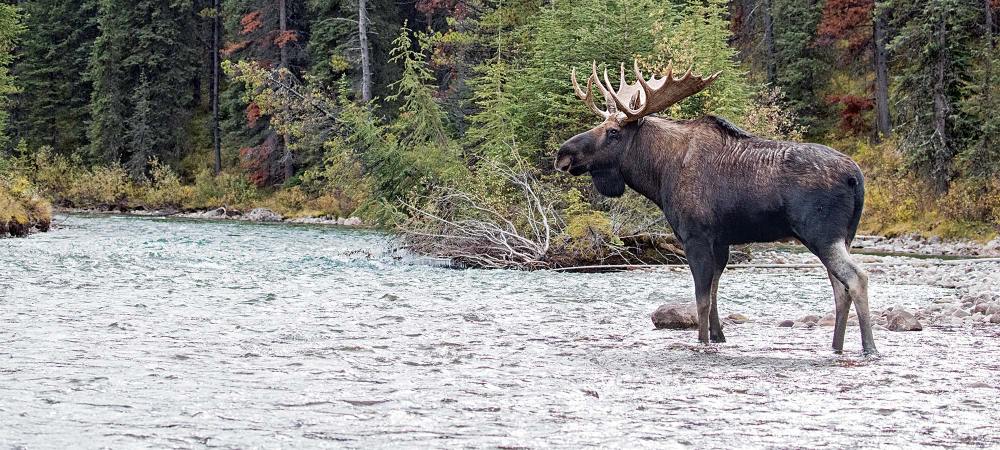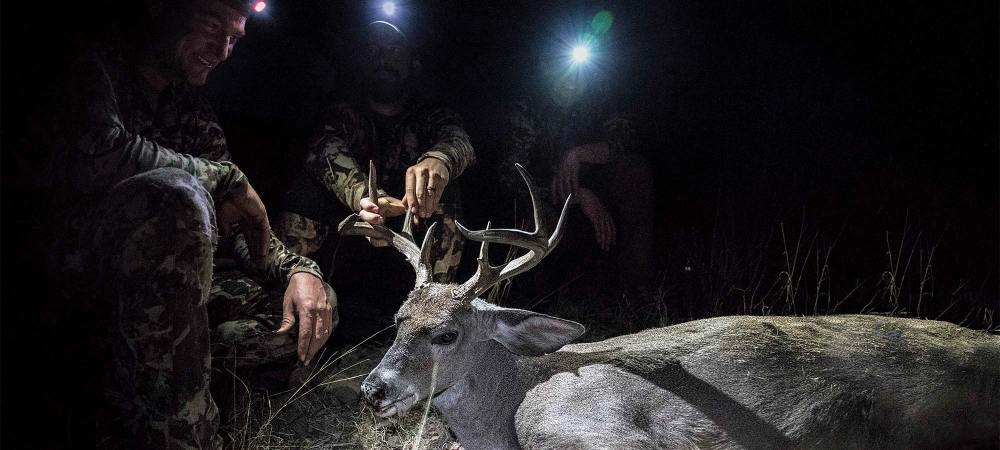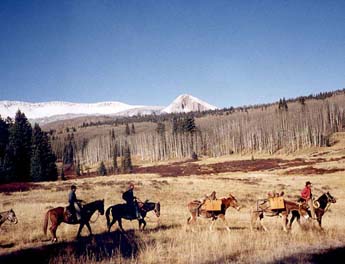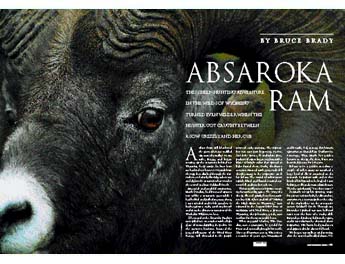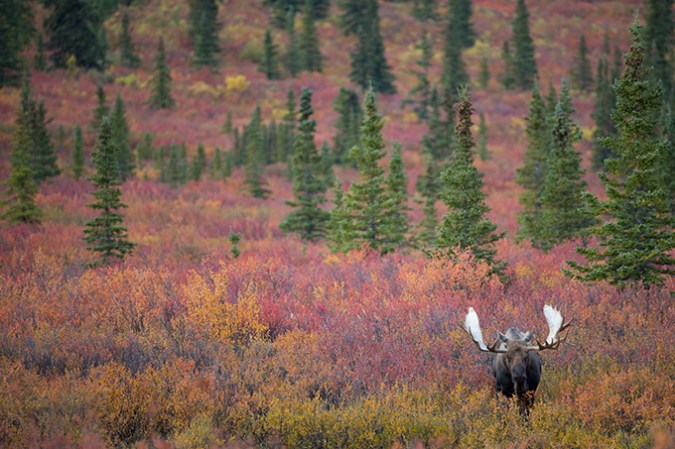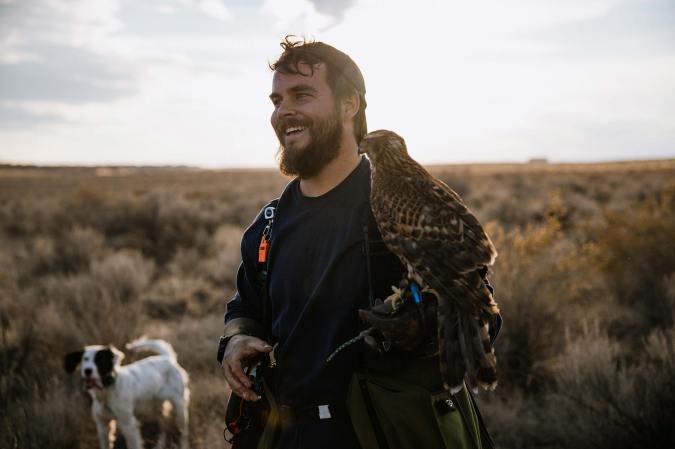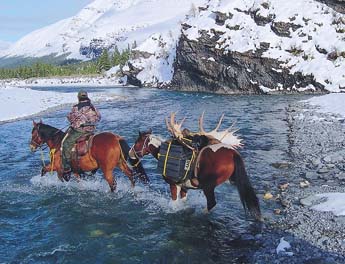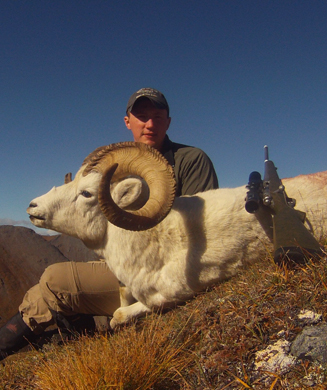At the top of the rocky defile in the Argentinian mountains, I stopped my horse. It was steep enough to make me lie back on my mount, practically against his tail. The horse would need to pick his way down a chute so narrow that a fat man would have had to turn sideways to squeeze through. At the end was a drop that looked to be about 3 feet high.
I’m no cowboy, but I’ve ridden horses on hunts throughout the Mountain West, and the country we were picking through was rougher and more technical than any I’d ever seen. I prepared to dismount and lead my horse through the bottleneck. Jorge Pavan, my guide, looked back, shrugged, and said, “No, it’s good.”
Argentinians have a deep and rich horse culture. They’re excellent riders. The classic Argentinian horse is small and sure-footed, bred over centuries for this kind of riding. I knew this, yet Jorge’s nonchalance still surprised me. Ah, what the hell. I gripped the reins, leaned back, and plunged in. After a tense few moments of hooves scrabbling on rock, we were through—at least until we hit the next obstacle in this jumble of rocks and ledges.
In addition to guiding for the lodge Rincón de Luna, where I was staying, Jorge is also “head of security.” His job is to make sure he knows all the local poachers and, more important, that they know him. He’s a retired captain in the Argentinian Special Forces, with the kind of personality you’d expect from a man with such a background: calm yet intense, friendly but tough, adventurous and fun loving. It’d take a lot more than some tricky riding to get him worked up.
We sat our horses for a minute and scanned the terrain for the red stags we were after. Before we moved on, Jorge looked at me with a wide smile. “What can I say? I like to do things the hard way. It’s always more fun.”
Over the next few days, I was to learn that Jorge meant what he said. We spent plenty of time doing things the hard way, but in the most fun meaning of the phrase: riding though the mountains, exploring canyons, finding and stalking stags.
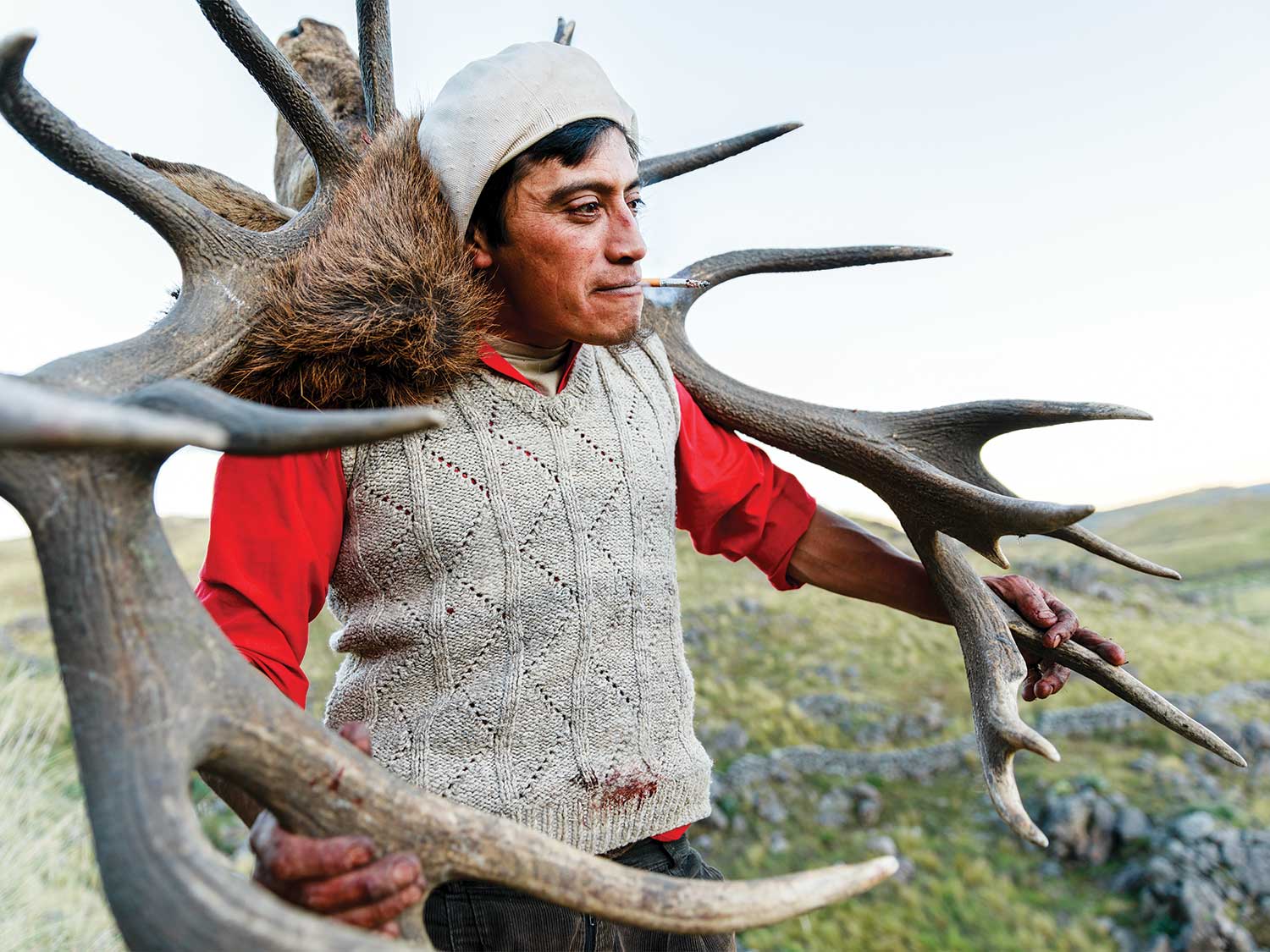
Life at Rincón de Luna, however, was anything but hard. We stayed in a unique lodge overlooking a river full of wild trout and mountains home to red deer. Our hosts were also good company (boisterous, welcoming, fun). We shared a lot of laughs with our new friends over delicious meals accompanied by the local malbec. This was not one of those hunting camps where roughing it was part of the appeal. I also couldn’t help but be excited that it was the end of May, and I was big-game hunting—in the fall.
Argentina is well known for both its robust domestic hunting culture and its status as one of the most popular destinations for international hunters. It certainly helps that its location in the southern hemisphere makes it an off-season option for hunters who can’t wait for fall. But it’s the wildlife and habitat that make the country so special. Most visiting hunters are wingshooters and waterfowlers, drawn by clouds of doves and ducks, many species of which a North American hunter won’t ever have seen. And, of course, Argentina’s trout rivers are some of the best in the world.
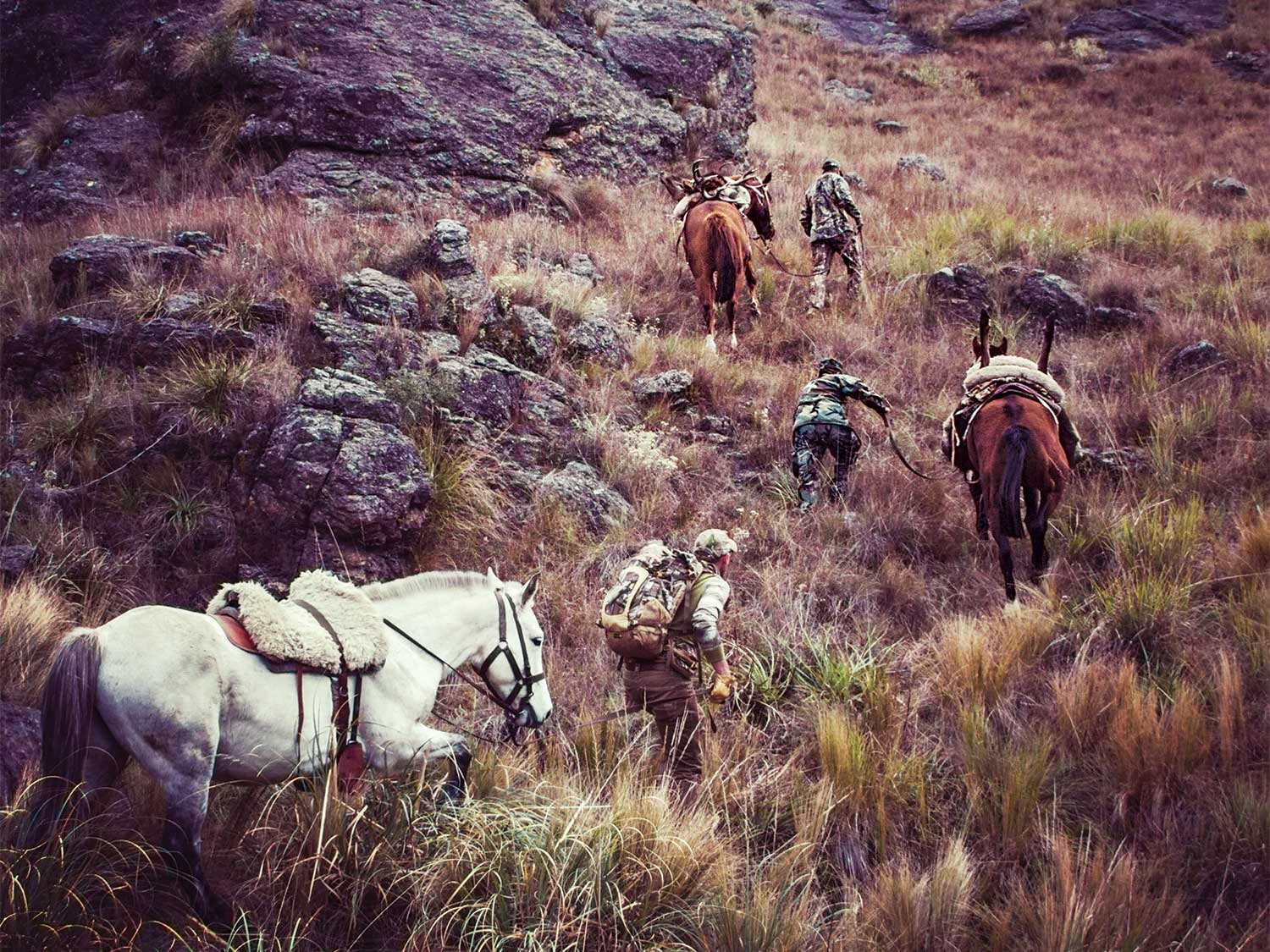
But I was here for the awesome red stag with his spiky crown, our own elk’s regal cousin. Argentina first imported red deer from Europe in the late 1800s. They adapted easily to the grassy Pampas and mountains, and now range from Patagonia up through Córdoba province, where I was hunting. Together, Argentina and neighboring Chile have the largest wild herds of red deer in the world.
Hunting stags here is a lot like chasing them in Scotland or other countries where they are found. It’s standard stuff for anyone who hunts our own Western deer. Spot and stalk is the name of the game, which means covering a lot of country, climbing high to get a good vantage point, and spending a lot of time glassing. Since it was later in the fall, the “roar” was over. Think of the rut in elk country, and substitute a bull’s bugle with a loud, moaning roar, and you get the idea. We missed that party, so instead of chasing stags that are roaming and fighting and grouped into small herds, we were hunting animals mostly focused on food and recovery. The herds had broken up and dispersed, and if we were to locate these lone stags and small bachelor bands, we’d need to cover some ground.
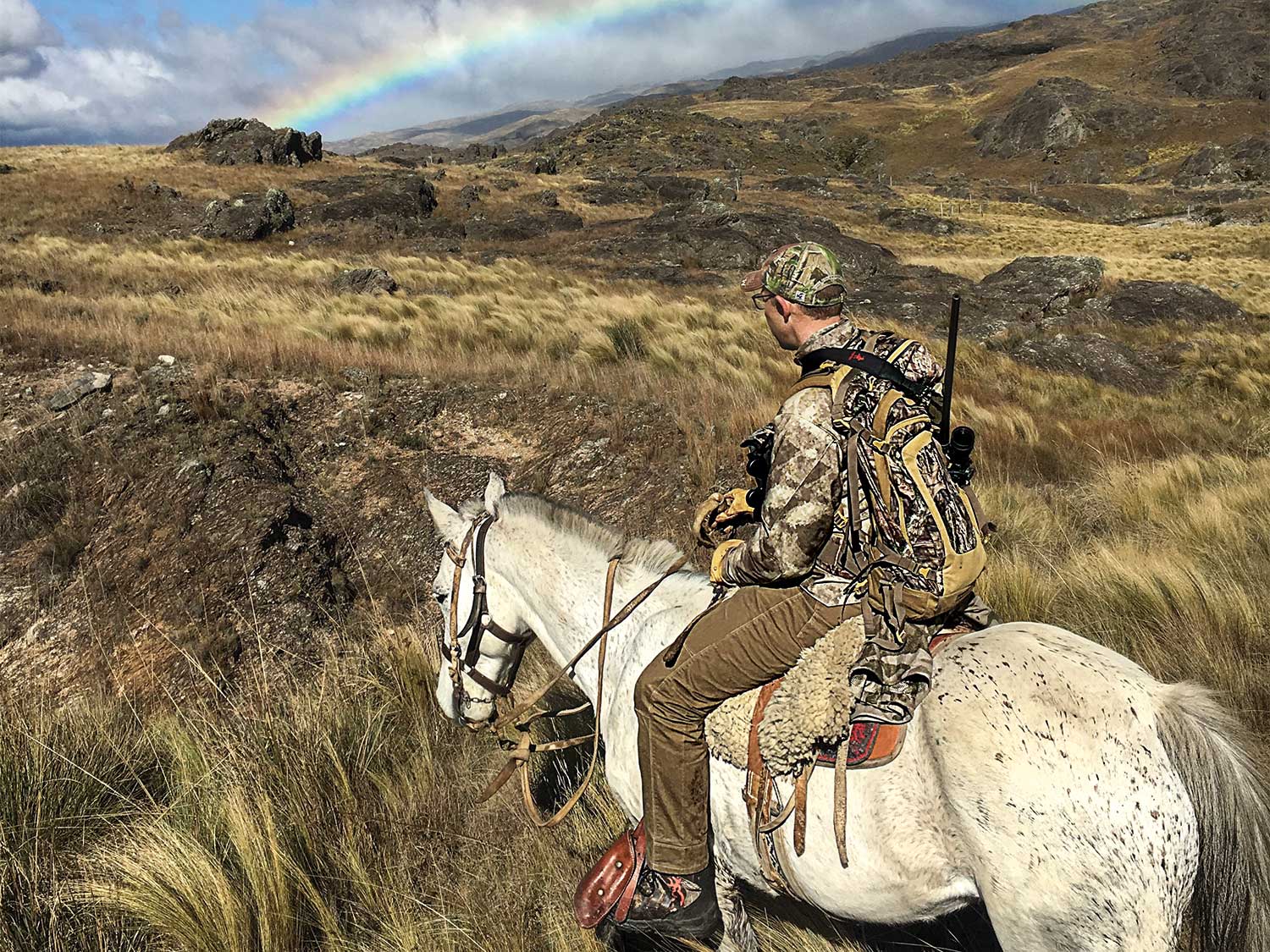
We Stood Around
in the frosty dawn, sorting gear, as the gauchos readied the horses for the hunt. The traditional saddle is a thing of beautiful simplicity. It has a multi-layered design that includes a saddle blanket (pelera), a saddle pad (mandil), and a minimalist leather saddle topped with a pellon—a thick sheepskin blanket. By the end of the week, I was grateful for the fleecy pellon.
The stirrups were big, open rings and were comfortable to use. I wondered, however, if their large size would make it easier for me to kick out should my horse go down, or if they would make it easier to mistakenly jam my foot through and get hung up. I imagined my head bouncing off the rocks while my horse headed for home—worth considering but not dwelling upon.
We mounted up, Jorge and I both strapped with good glass, and me with my rifle (unloaded, of course) slung crossways over my back. Then we headed for the hills.
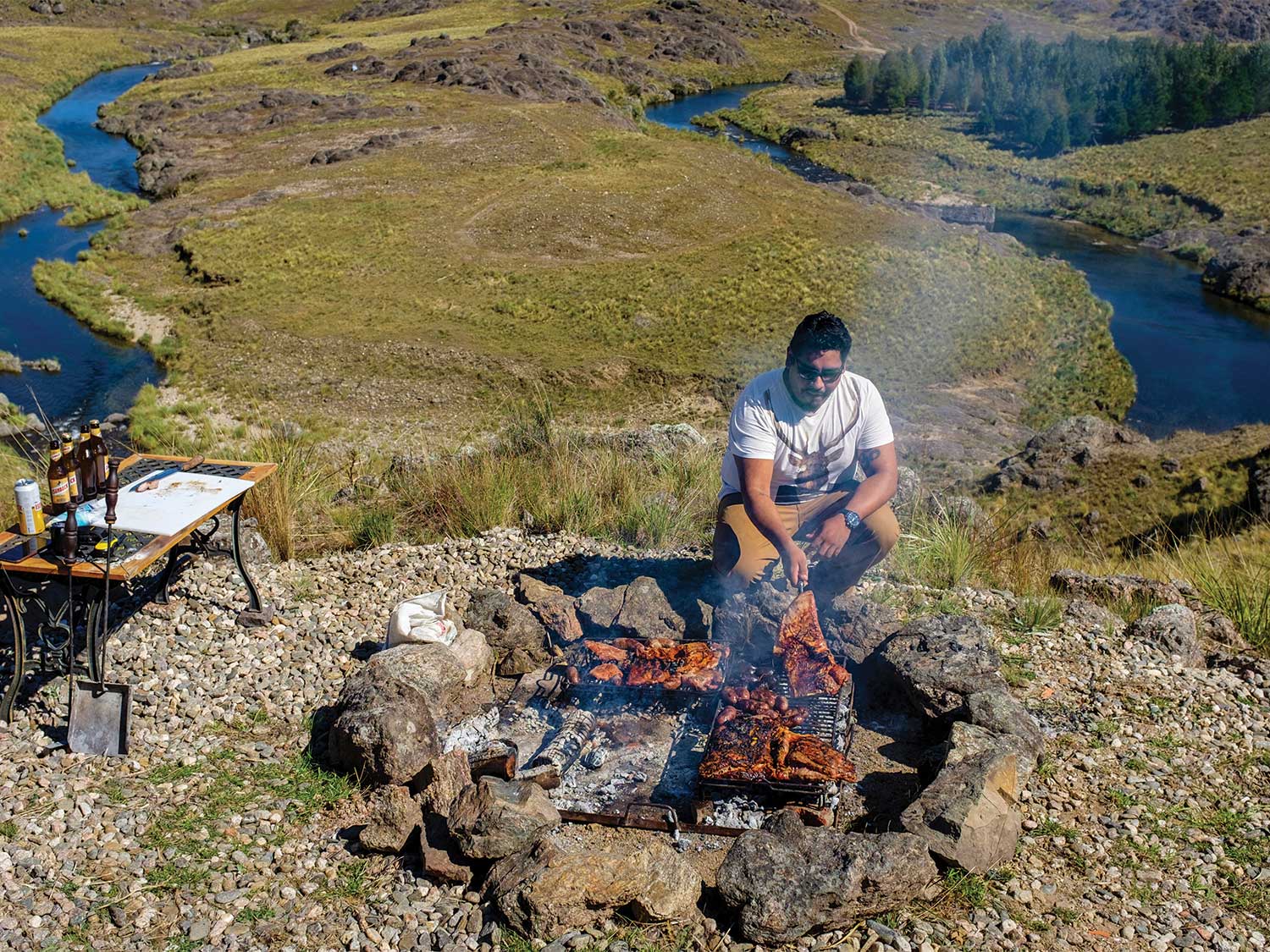
The classic gaucho horse is the Criollo. Descended from the hardy horses brought by the early Spaniards, they thrive in this harsh terrain. Known for their toughness and stamina, they make the perfect partner for the gaucho, and our horses showed no sign of tiring as we rode up into the hills. This rocky grassland is just one small part of the vast Pampas ecosystem, a mostly temperate lowland prairie that covers 300,000 square miles across several countries. The habitat is largely treeless but has many species of grasses, like the classic pampas grass, as well as some shrubs and other low vegetation. It has a unique character, sometimes quite unusual to someone from North America, but I can think of a few places in Montana and Arizona that it reminds me of.
The terrain appears wide open at first, but look closer and the many places for game to hide are immediately apparent to any hunter. There are deep canyons and coulees, small draws, and many ridges. Brush that looks short from afar turns out to be high enough to hide even a tall-crowned stag. There were countless folds and creases in the land to conceal plenty of critters.
The perfect way to explore this vast landscape—with its grassy slopes and sweeping spaces—was atop a strong, smart, and very well-trained horse. We rode under a big sky patrolled by Andean condors gliding on enormous wings, floating just above the ridgetops and drifting over the stone ruins left by missionaries, shepherds, and other long-gone people. It’s breathtaking country no matter how you see it, but to me it’s the kind of place that looks even more vibrant from the back of a horse.
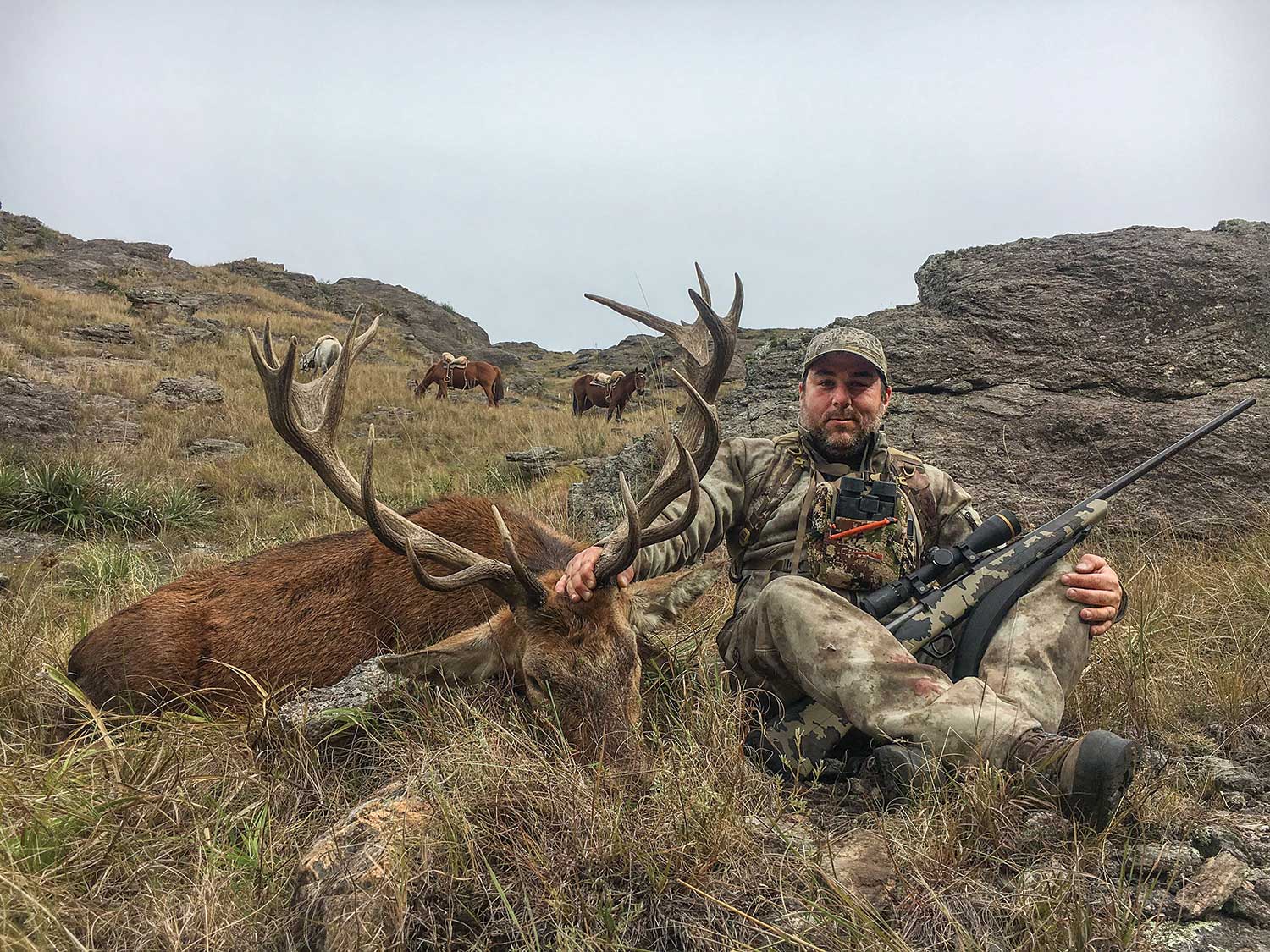
The first few days of hunting were good and very similar. We’d ride and glass and then stop. (My horseback glassing technique was a little shaky.) We’d creep around and peek into various canyons to scan for deer bedded on the slopes or feeding along the creekbottoms. We rode through large areas without seeing much of anything but stone and sky.
We spotted deer—sometimes hinds (females), sometimes young stags. Other times, they were too far away for us to make a play. A couple of times we made exploratory stalks only to decide to hold out for a bigger stag. The open terrain made it easy to spot stags at a distance with our binoculars, but it also made it easier for the stags to spot us. We spooked a few. It was important to use the terrain and available cover, because the stags spooked easily and often picked us up from far away. They were a bit more tolerant of the horses, but only at a distance. And to get close, the wind had to be right.
Sometimes we’d stop at a high vantage point, overlooking some promising draws and canyons, and sit down and glass carefully for a while. But we never stayed very long in any spot—just enough for a quick bite and a drink of water, a little bit of BS-ing while we looked, and then Jorge was ready to move on.
I have no doubt that if we’d stayed in one of those spots for a few hours, we’d have spotted a nice stag, But I was with Jorge, and he had professional reasons for why he liked hunting far and wide over the ranch property.
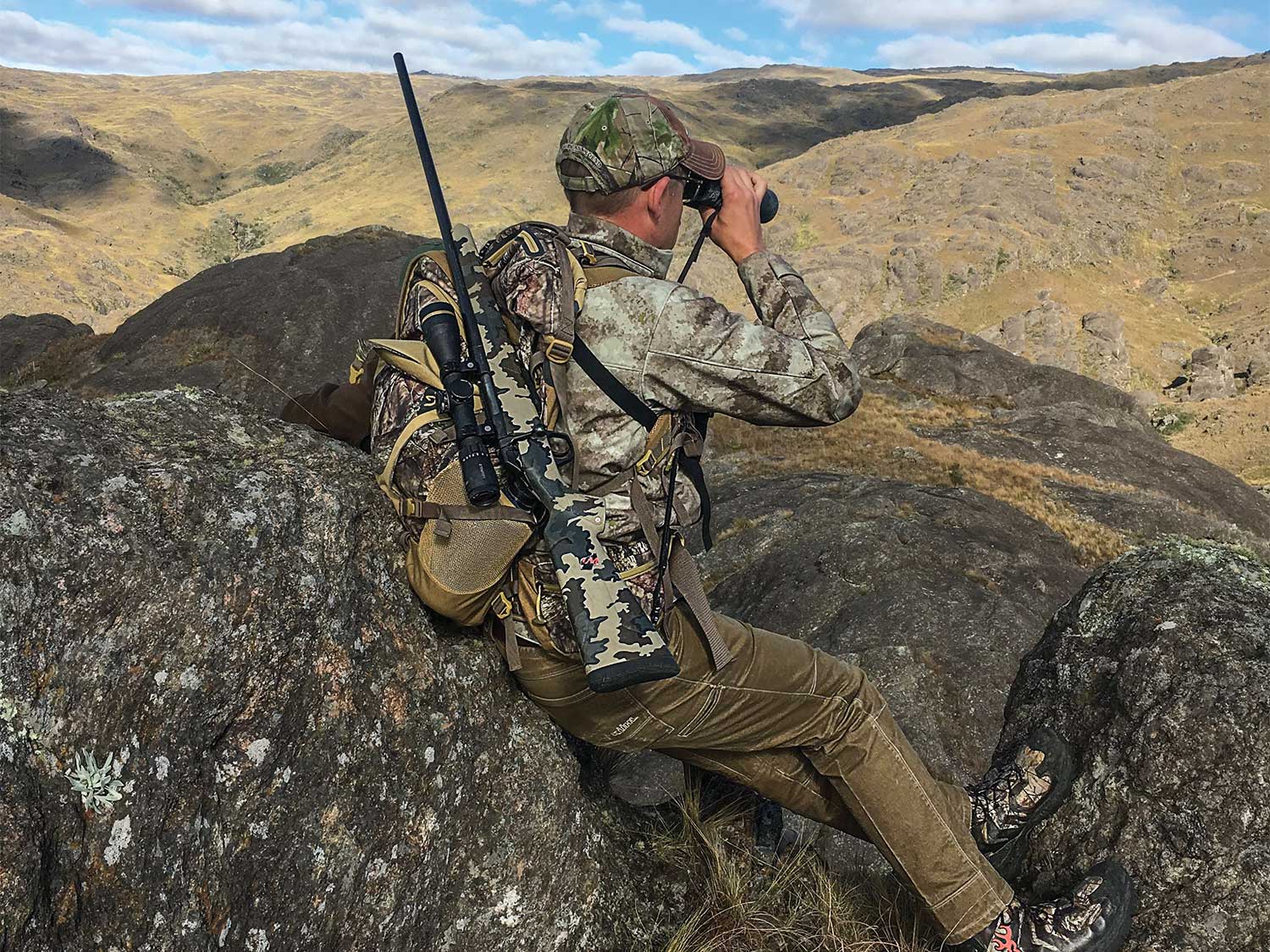
“I’m director of security, man,” he said. “I need to know every bit of ground on the place. There are some areas that even I don’t know.”
But then he laughingly admitted that the more honest reason for always wanting to move on was he just didn’t like to sit still for long. He liked to keep moving. I was truly with him on that. I was happy with all that time in the saddle.
The Restorative
To long days of hunting at Rincón de Luna is good conversation over drinks and snacks around the fire, which burned in an immense stone hearth big enough for three to stand inside comfortably.
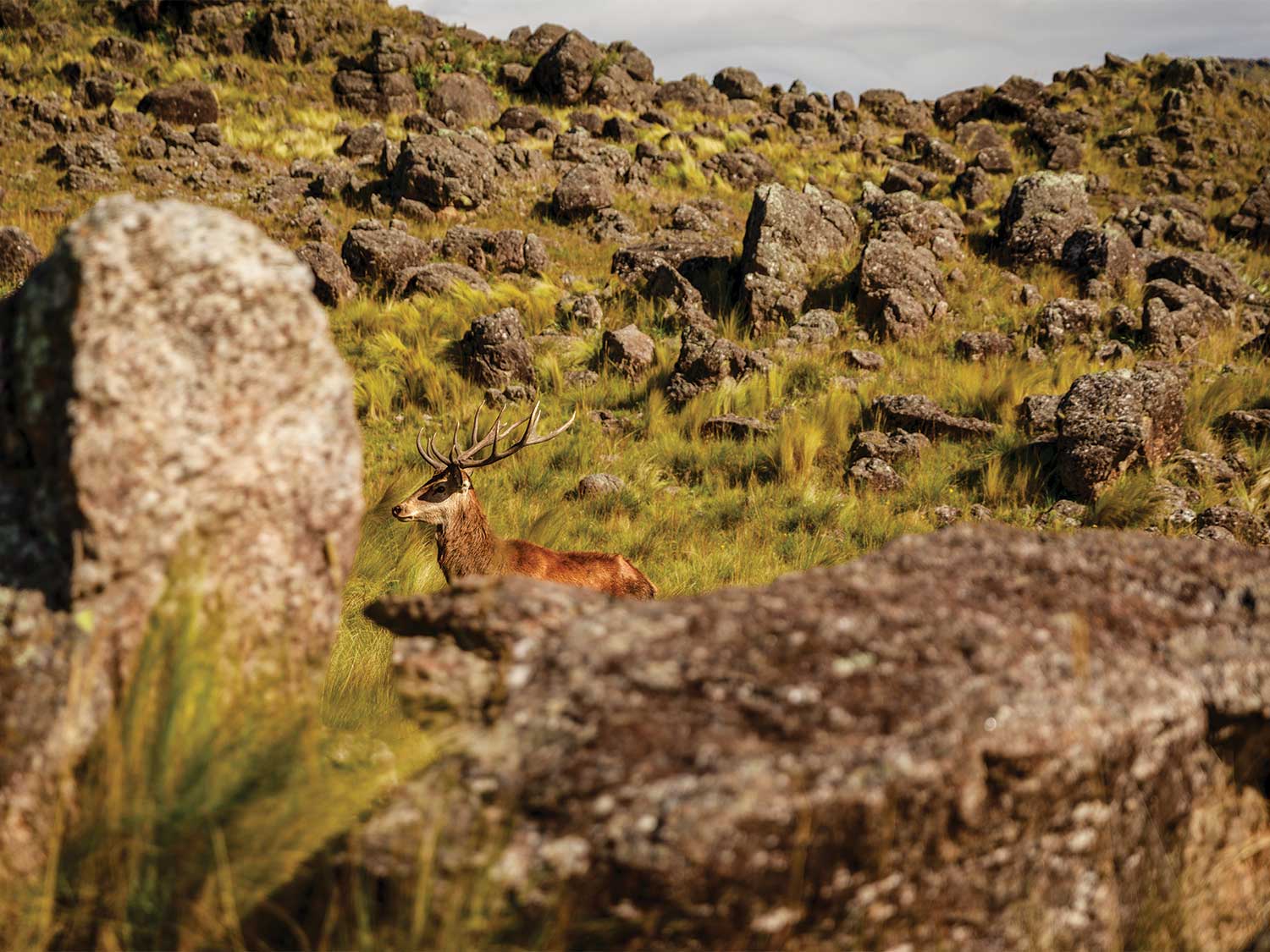
Hunting internationally is a special opportunity—and not only because of the wildlife. The people you meet and the cultures you learn about are just as important to the experience. If you’re not making friends, eating new food, getting a sense of the place, and asking a ton of questions, you’re doing it wrong.
This is a dream country for those of us who occasionally indulge in gluttony. Argentinians are well known for being carnivores, and they are quite proud of their food for good reason. There were piles of their famous steaks, of course. Meaty slabs of beef ribs, cooked asado-style—splayed open on an iron rack in the hearth, dripping fat into the flames and coals.
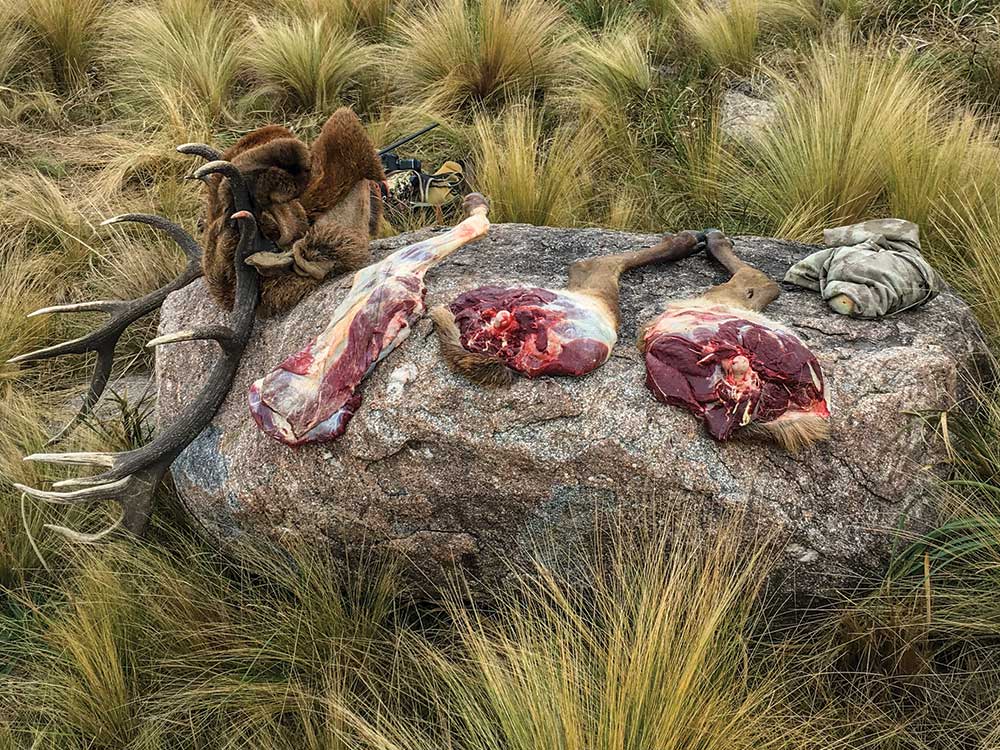
But by far the best meal we shared was on Patriot’s Day, May 25, a holiday commemorating a crucial event in the country’s struggle for independence. Everyone at the lodge, plus friends and neighbors, came for the celebration. We put on flag pins, uncorked the good wine, and gathered around a long table for the feast. The empanadas were out of this world. Stuffed with ground beef, caramelized onions, scallions, green olives, and hard-boiled eggs, the light dough was deep-fried in beef tallow until crisp and flaky. They were the best I have ever eaten, and I’ve eaten a lot of empanadas. But the real treat was locro, a traditional stew containing acorn squash, beans, skirt steak, pork ribs, sausage, flank steak, and other unidentified hunks of meat hanging off of bits of bone. You couldn’t cram anything else, or more flavor, in the dish. I could only hope that the small, stocky Argentinian horses would hold up under the strain.
Jorge and i dis-mounted on a narrow plateau from which we could sneak around and look into several different drainages. We peeked into the first draw and saw antlers flashing in the bottom. We backed up, hitched the horses, and then crawled back for a closer look. Two mature stags, with thick antlers and nice crowns—the cluster of points at the end of the main beams of mature stags—were feeding in the creekbottom of the narrow, deep canyon. The vegetation was high and covered most of the stags’ bodies. We belly-crawled farther down, until we could see better, and set up behind some cover. The stags were about 200 yards away, feeding up the drainage. I was prone with a solid rest on my pack. The wind was with us, and stags had no idea we were there. I waited as they moved a little closer, until the larger stag gave me a clean broadside shot, and fired. He spun and leaped and then disappeared from view, dropping into the creek. This canyon was wicked steep, and it took us a while to lay our hands on his antlers and give thanks. Even with the horses, quartering and packing him out of that black hole took the rest of the day and was good, honest work.
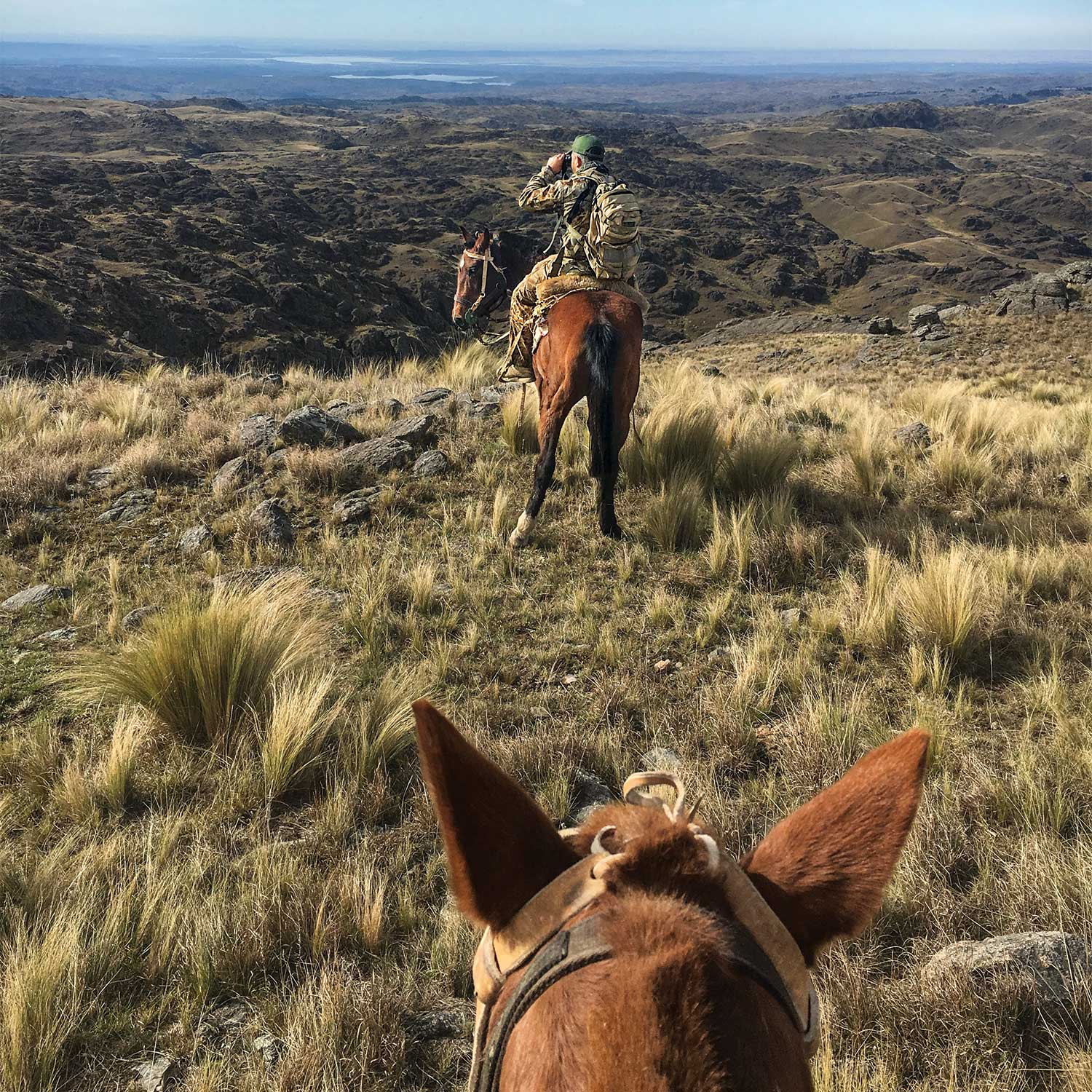
Many of us were tagged out by the last day, so we broke out our fly rods and hit the river that flowed in a long arc through the valley below the lodge. We were told it wasn’t anything special, that it didn’t have big trout and wasn’t the kind of river that people came to Argentina to fish. But it held plenty of wild rainbows, and it was pretty water that was rarely fished. Good enough.
The freestone stream ran through meadows at the edge of the foothills. It had everything you want in a small trout river—a pleasant mix of slick runs, deep pools, undercut banks, tumbling pocket water, and stretches of fast riffles. Cold, clean water. It didn’t take long for us to start picking up trout on both nymphs and dries. They were small, most about 5 or 6 inches, with the occasional 8-incher. But, oh man, were they pretty. I tied on a Royal Wulff because, why not, and immediately a feisty rainbow inhaled it. As I cradled him in the water, admiring his pink stripe, deep purple parr marks, and bespeckeled green back, I thought of one of my favorite fishing quotes, by Arnold Gingrich: “A trout is a moment of beauty known only to those who seek it.”
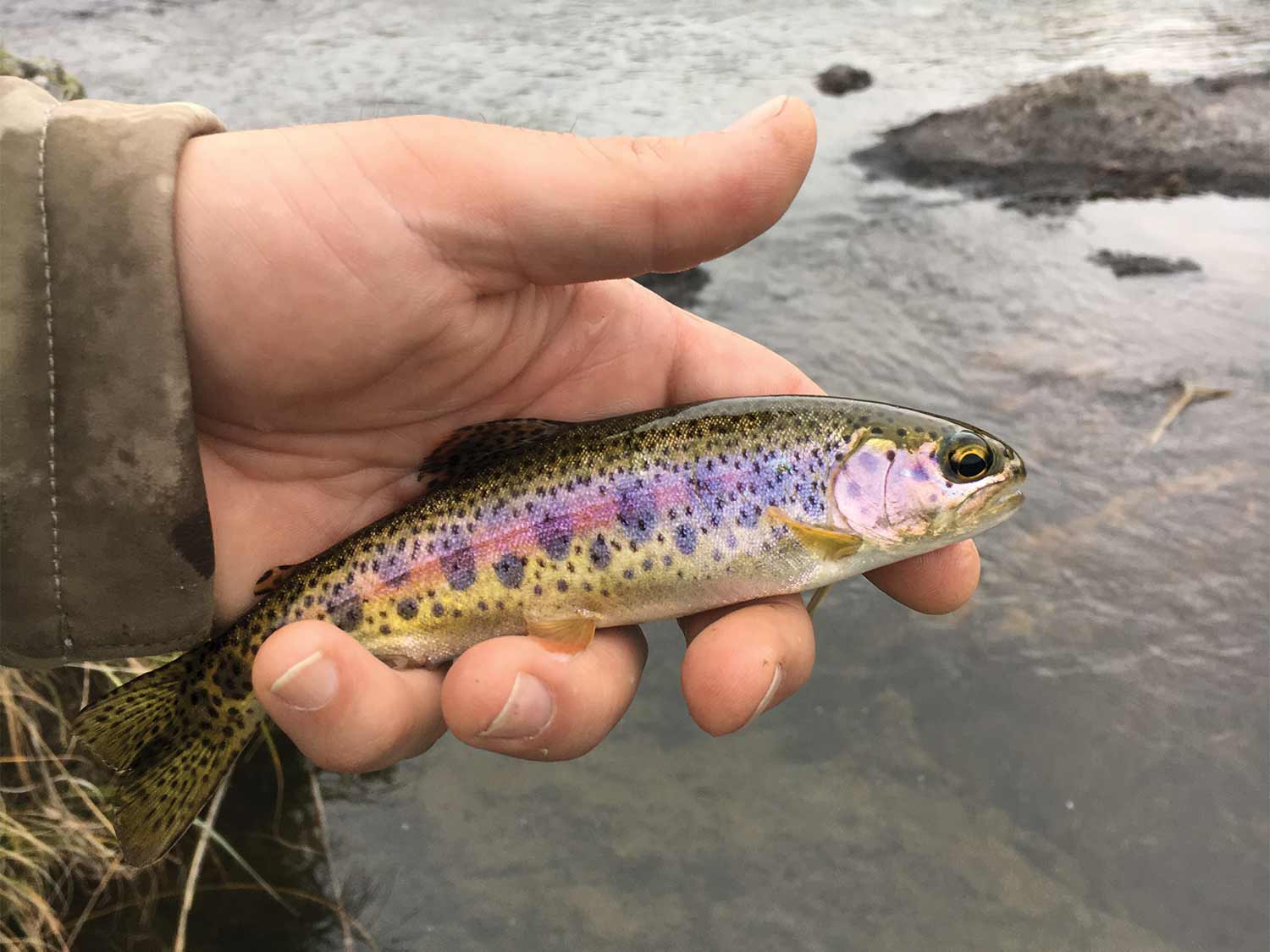
It’s a good way to think about a lot of things. Hunting these stags took me into some spectacular places and let me see a lot of magnificent deer. But it also brought me to this river and these trout. To new friends. It gave me camaraderie and laughs. Showed me a new culture and taught me some history. And fed me lorco, my new favorite stew. There are beautiful moments to be found everywhere when you travel to hunt. All you have to do is seek them.
Read Next: Free-Range New Zealand Hunting: An Adventure in Middle Earth
A Pampas Rifle
This rough, open country requires a gun with toughness and accuracy.
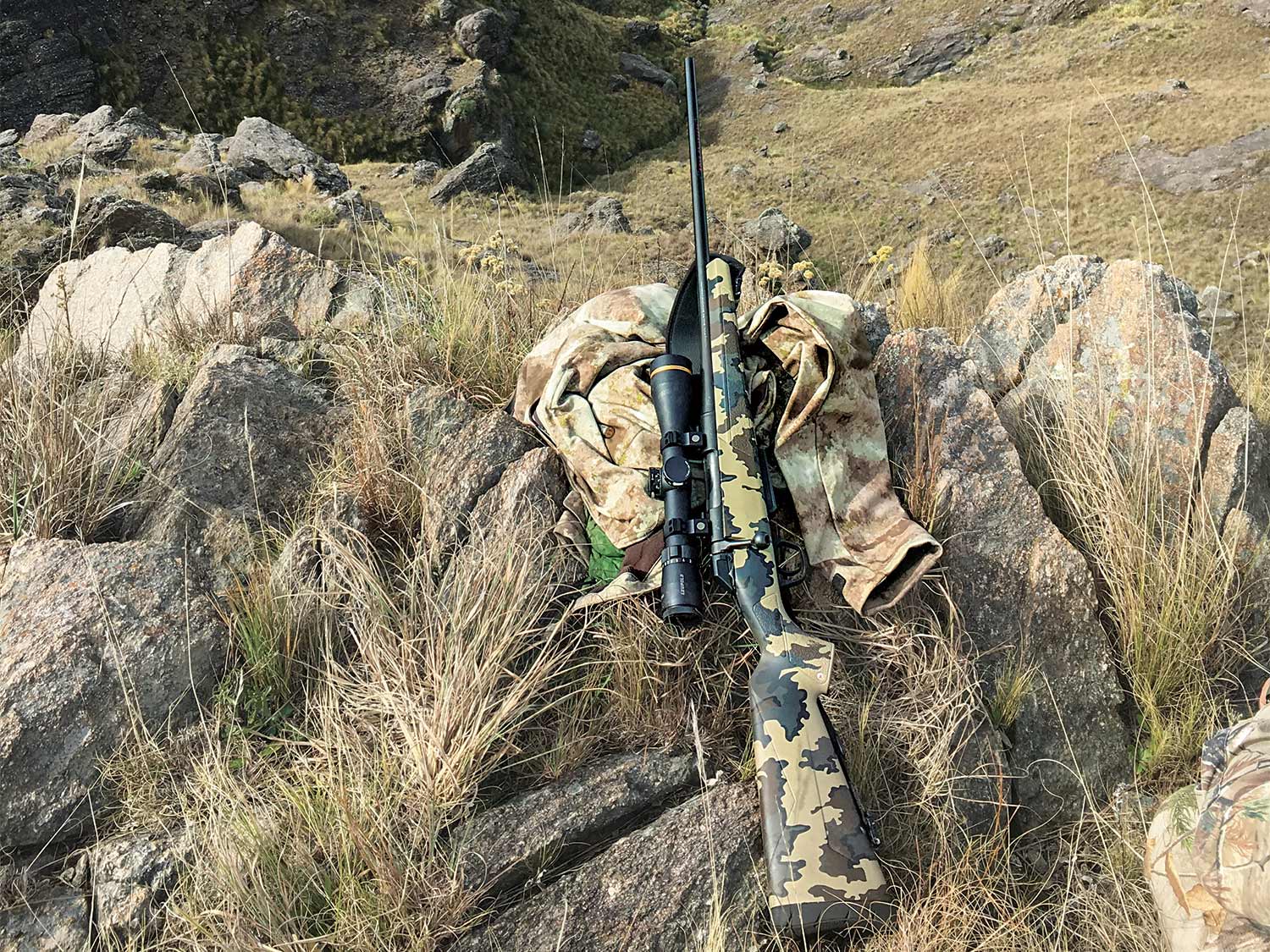
They are not quite as large as elk, but red deer are still big, tough critters. I hunted with a Winchester XPR in .300 WSM. The XPR is accurate, has a great trigger, and is very affordable. The version I used was the Vias, which has Kuiu camo and a Perma-Cote finish. The .300 WSM is the kind of flat-shooting, hard-hitting round this open country calls for, and I used Winchester Expedition Big Game ammo.
I topped my rifle with a Leupold VX-6HD scope, an excellent choice that can stand up to getting banged around on top of a horse. I also carried a small set of shooting sticks. Shots can be long, and a steady rest is always better.
